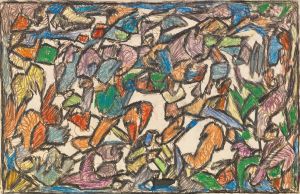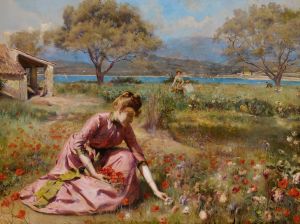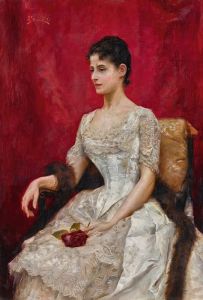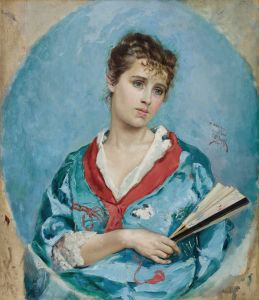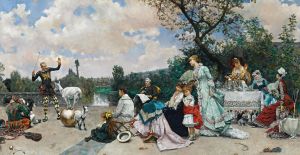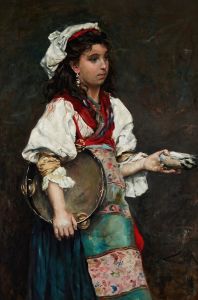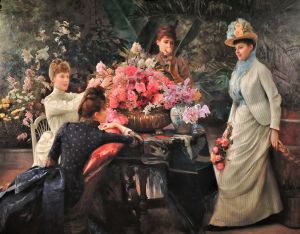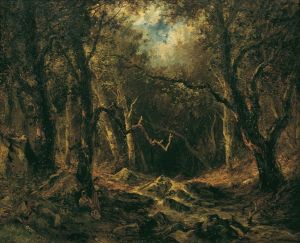
Les Chasseuresses
A hand-painted replica of Julius Leblanc Stewart’s masterpiece Les Chasseuresses, meticulously crafted by professional artists to capture the true essence of the original. Each piece is created with museum-quality canvas and rare mineral pigments, carefully painted by experienced artists with delicate brushstrokes and rich, layered colors to perfectly recreate the texture of the original artwork. Unlike machine-printed reproductions, this hand-painted version brings the painting to life, infused with the artist’s emotions and skill in every stroke. Whether for personal collection or home decoration, it instantly elevates the artistic atmosphere of any space.
Julius LeBlanc Stewart was an American artist known for his detailed and vibrant depictions of the social elite in the late 19th and early 20th centuries. Born in Philadelphia in 1855, Stewart spent much of his life in Paris, where he became associated with the art scene and developed a style that combined elements of realism and impressionism. His works often captured the opulence and leisure of the upper classes, and he became known for his portraits and genre scenes.
One of Stewart's notable works is "Les Chasseuresses," which translates to "The Huntresses" in English. This painting is a fine example of Stewart's ability to capture the elegance and sophistication of his subjects. While specific details about the creation and exhibition history of "Les Chasseuresses" are limited, the painting is consistent with Stewart's broader oeuvre, which often depicted women in leisurely or social settings, sometimes engaging in activities traditionally associated with men, such as hunting.
"Les Chasseuresses" showcases Stewart's skill in rendering textures and fabrics, as well as his attention to detail in portraying the fashionable attire of the period. The painting likely features women dressed in hunting attire, a theme that reflects both the leisure pursuits of the wealthy and the evolving roles of women in society during that era. Stewart's work often highlighted the changing dynamics of gender and class, subtly commenting on the social transformations of his time.
Stewart's paintings were well-received during his lifetime, and he exhibited regularly at the Paris Salon, one of the most prestigious art exhibitions of the time. His ability to capture the essence of high society made him a popular artist among the elite, and his works were collected by patrons who appreciated his keen eye for detail and his ability to convey the luxury and elegance of their world.
Although "Les Chasseuresses" may not be as widely known as some of Stewart's other works, it remains an important part of his artistic legacy. The painting exemplifies his mastery of composition and his interest in portraying the nuanced interactions between his subjects and their environments. Stewart's work provides valuable insights into the cultural and social milieu of the late 19th century, offering a window into the lives of those who inhabited the upper echelons of society.
Today, Julius LeBlanc Stewart's paintings are held in various private collections and museums, where they continue to be appreciated for their historical significance and artistic merit. His contributions to the art world are recognized for their ability to capture a specific moment in time, reflecting the complexities and contradictions of an era marked by both opulence and change.





